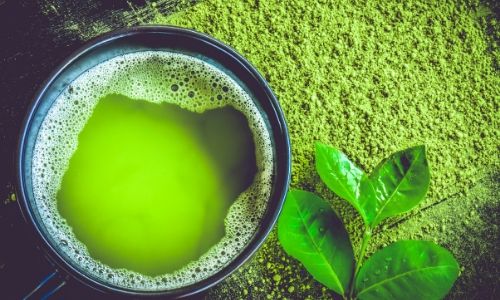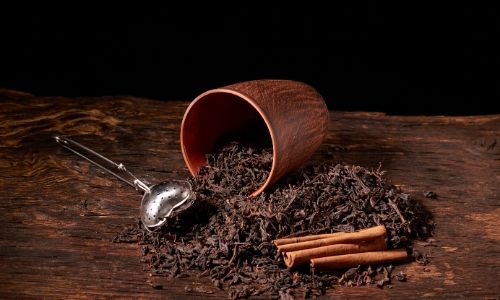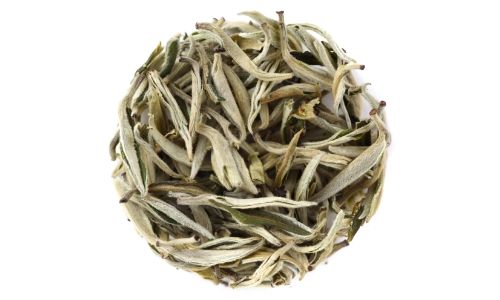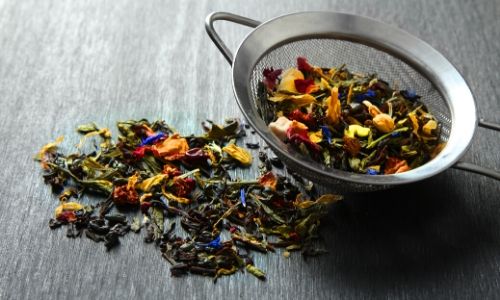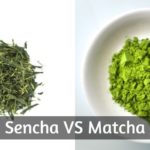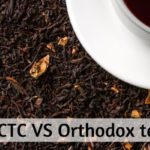The way tea is made influences a lot about its final flavor. Knowing how our favorite tea is made can shed light on why we like it, and what other teas we may like as well.
So, let's talk today about how tea is made.
How each tea type is processed, and the main differences between them, as well as how it used to be made, thousands of years ago.
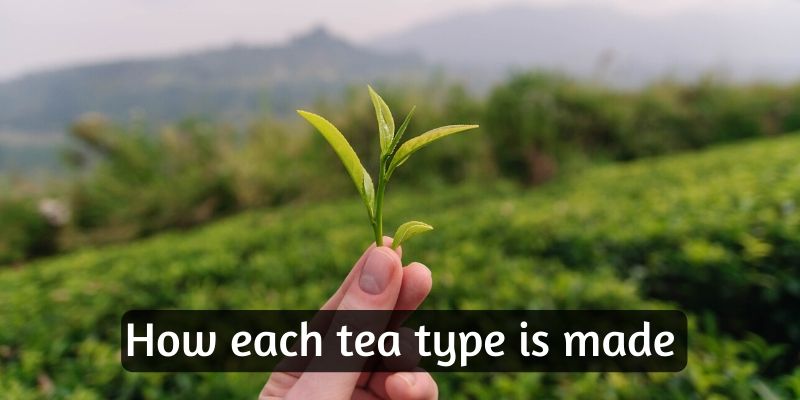
Table of Contents
So how is tea made ?
Tea - as in, true tea - is made by wilting, oxidizing and heat-treating the leaves of the Camellia sinensis plant.
Herbal tea is much simpler, often requiring only wilting and drying the leaves or flowers, before brewing them.
Each tea type has its own specific process, which we'll cover shortly.
Tea is a very ancient beverage, and as such it has a long history. For the most part, the way it used to be processed and the way ti is today really aren't that different.
Yes, there are a few key differences but the overall process is the same. We'll cover that as well near the end of this article.
But first, let's talk about how each tea is made.
Different teas mean different processing methods
Seeing as each tea type tastes different from the other, it makes sense that they're also processed in a different way.
You'll notice that we're not talking about flavored teas today. We're covering the basic versions is each tea, since each tea company adds the flavoring stage at different times for each tea type.
Before we start though, we should also note that most of these teas use Camellia sinensis leaves. This is an evergreen plant, and the best leaves are in the springtime.
Another plant used is Camellia Assamica,and that is used almost exclusively for black tea, at least some variations.
How green tea is made
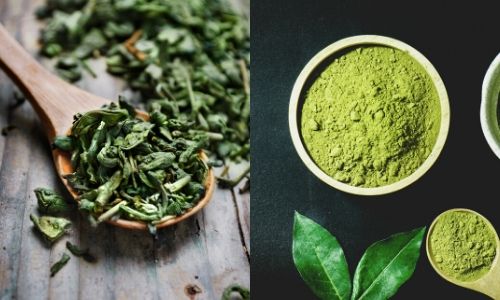
Green tea is probably the most popular tea out there, only rivaled by black tea. It's the oldest form of tea there is, older than black tea.
The thing is, for a tea as old as this is, very little has changed about it in the past thousands of years, except a few minor tweaks.
So, we start off by only picking the youngest, most tender leaves.
We then take said leaves to be wilted and oxidized, first.
Most green teas are wilted by exposing them to the sun, or are left to wilt for a couple of days indoors. Then, they are oxidized, and this process actually begins while they're wiling.
The reason we oxidize green tea is because raw green leaves really aren't very good in tea.
So, a slight bit of oxidation will bring out the right flavor.
Oxidation is done by rolling, tumbling, shaking the leaves in baskets or large rolling vats, so they end up a little bruised. The key here is 'a little'.
After this step is done, the leaves are heat-treated. This is to preserve the current oxidation level. More oxidation means a different flavor, and we'd be making a different tea if we oxidized it longer.
So, we take the bruised leaves and cure them with heat, usually by pan firing them or lightly baking them in an oven. They don't come out crisp, but they're meant to get really hot, really quick. They're only heated for a few seconds.
After they've been cured, the leaves are then rolled and shaped into the final product.
Some are shaped into tiny little balls, others are twisted while others are just flattened into needle-like shapes.
Once the leaves are shaped, they're left to dry out completely. After that, they're sorted and graded for quality.
Japanese and Chinese processing
When we've discussed so far was the Chinese method. It's the most common method, and what most companies use when making green tea.
The Japanese have a different method, which is actually the ancient Chinese method but they don't use it anymore.
The Japanese method skips oxidation, their teas taste different than the Chinese ones.
After harvesting, the leaves meant for green tea are sent directly to be steamed. This preserves their color and tenderness, and does not oxidize them.
In fact, it makes sure they can't oxidize at all, at any point in the future.
As such, Japanese tea is well know for being amazingly fresh and delicate. This also translates into the brew color as well.
Where Chinese green tea gives a golden-green brew, the Japanese gives a light green brew. This is due to:
- no oxidation
- steaming, which brightens the color
- no pan firing, which may give a golden tinge to the tea
Very good examples of Japanese green tea are Gyokuro, and Sencha. They're not the only ones, but they're some of the best.
Matcha is a powdered green tea
While we're on the topic of Japanese green tea, let's touch on Matcha a bit. This green tea is Japan's best tea, and it's got a very different process than others.
After the leaves are harvested, they are sent to be steamed. So far nothing's different.
But, after steaming they're allowed to dry out a little and then the thick stem and veins are removed from within the tea leaf. This is usually done by hand, as it's a very delicate process.
Someone actually takes the time to carve out the thickest part of the stems and veins, leaving only the leafy, thin parts.
Once these are dried, they're ground into a very fine powder. So fine they should be like talc powder.
The resulting green tea is meant to be absurdly green - almost make you think it's fake.
But the reason is that the tea was not only steamed, but shade grown.
That's right, Matcha leaves are grown in the shade for about 3 weeks before harvesting.
In fact, several Japanese green teas are grown this way, but Matcha just takes the cake.
How black tea is made
Alright, now for the second most popular tea - black tea.
This tea is called black because of the color of the leaves after they've been processed. This is because the leaves are oxidized much, much more than for green tea.
Alright, so the process is very much like the Chinese green tea.
Harvest leaves, wilt them, oxidize the leaves.
But the oxidation process takes so much more time. They're shaken and bruised and generally battered until they've gone a very dark green.
The point is to break the cell walls inside the leaves and this way obtain a very malty and earthy flavor.
This process is followed by curing with heat, which is usually pan firing or baking the leaves.
The leaves come out much darker, almost a dark brown. After they've cooled they turn a little darker still.
So, once the leaves are cured with heat, they're shaped into whatever shape is needed. Black tea is less specific about the leaf shapes, so most of the time the leaves just end up slightly curled or twisted.
Finally, they're left to dry completely, and are done.
Often you'll notice that the leaves used for black tea are of the Assamica variety. When this is the case, it's called Assam tea. Or it might be a black tea blend that also contains Assamica leaves - like a breakfast tea.
CTC and Orthodox
The method we discussed above is the most common, traditional way of making black tea. At least, full leaf black tea that generally ends up being sold as loose leaf.
Some parts of the full leaves break down during the processing stages and the resulting dustings are used for teabags.
However, a much simpler method for teabag black tea has been invented. It's also available as a loose leaf, but you'll often find it in teabags because it just works better that way.
So, this method is called Crush, Tear, Curl - CTC for short.
The leaves are harvested, as usual, but then they are fed directly into a double rotor barrel, that comes equipped with tiny teeth that act as a sort of grater.
Basically the leaves are cut up and torn into tiny pieces from the beginning, and while the barrels roll, the leaves are also rolled into tiny pellets of sorts.
This speeds up the oxidation process and makes black tea go along much smoother.
After this, the leaves are also cured with high heat and there is barely any shaping necessary. Almost every time, the torn up leaves end up in teabags, and they don't need a particular shape.
The resulting tea is often stronger tasting than orthodox black tea, and but it lacks depth of flavor and nuance.
It's especially good for really strong cups of black tea, or Masala Chai.
How Oolong is made
When it comes to Oolong, the production process is a cross between green and black tea.
The same laves are used, but it's the oxidation process that's different.
So again we have harvesting, wilting the leaves and oxidizing them. But they're meant to be oxidized longer than green tea, but less than black tea.
And after they're oxidized, they are heat treated, but at a very low temperature - definitely lower than black tea.
This makes the treatment take longer, and the overall result is a flavor that's neither green tea nor black. It's a tea of its own, and it doesn't really fit into any category but its own.
You'll see some folks call Oolong tea a type of green tea - it's not.
Once Oolong is heat treated, it's also shaped and left to dry.
Special variants like the smoky Oolong are hung over a smoldering fire, to really soak up the smoky flavor.
The overall point of this tea type is to extract flavors that otherwise wouldn't be possible from green or black tea.
The emphasis is on oxidation, and it's kind of an exploration of how many differences you can get from different oxidation levels.
This is a complex tea that really needs a good tea master's touch.
How Pu'erh is made
When it comes to Pu'erh, we're really delving into ancient territory. This is a very old tea, both by recipe and by each individual piece.
Pu'erh is derived from the ancient (read: a couple thousand years ago) Chinese green tea, and it goes something like this.
Tea leaves are harvested, much like for green tea. They're then oxidized, using the same process of bruising and shaking/tumbling the leaves in baskets.
Once the tea master is happy with the oxidation level, he'll leave the tea to dry out. Some types are left to dry in a pile, which ferments them a bit, while others are left to dry in a thin layer.
Afterwards, the leaves are steamed and pressed into thick bricks or cakes.
Once these bricks are done, they're let for several weeks or months in warm, moist cellars. This is to encourage specific bacteria to develop within the leaves.
It's a bit like making pickles or making Kombucha. The bacteria is not harmful, it's meant to develop the flavor.
During this time, the tea master inspects the bricks every now and then, to see how they're doing.
Where he stops each tea depends a lot on what he's after, but once he's decided the tea is done, he will move it to a dry, cool cellar.
This slows down the bacteria, and ages the tea. This can go on for years, and so far the oldest Pu'erh is 50 years old.
Now, understand that Pu'erh is very much like a wine. This tea is aged, so whatever you buy was not made a couple of weeks ago.
Pu'erh can be bought as young as 7 years, as this is the minimum age it needs to fully develop specific flavors.
The level of oxidation, how much the bacteria was allowed to grow, how long the bricks have been aged, these are all key points in how the final tea will taste.
Pu'erh is a bit of a delicacy, and one batch is never like the other. We're meant to enjoy each version as it happens.
How white tea is made
White tea is a simple tea, compared to its other brothers and sisters.
But it's a very delicate. You may have noticed we've gone from light tea to strong, very flavorful tea in this list.
Now we're closing with a light white tea, to cleanse our palate.
White tea uses tea buds, and tea buds only. No leaves are allowed.
This means that only a small batch of white tea is made each harvest.
So, we begin by harvesting the youngest, most tender tea buds we can find on the top of the tea plant. The buds are meant to have tiny silver-white whiskers on them.
This is part of why it's called white tea.
Once the buds are picked, they're left to wilt, and dry out completely. This is usually done by exposing them to the sun.
And, the tea is done. This is a very fine tea, even if it sounds like it's simple. It is simple, but it's also very delicate because of the tender tea buds.
The resulting brew is a very light one, only lightly colored and it has a slightly floral flavor. There is no oxidation here, so no amber tinge should be present.
Herbal tea is much simpler
Finally, let's talk herbal tea. Depending on the tea, you might find flowers, leaves, stems, fruits, mushrooms, you name it.
But there is a key element in all of this: all these ingredients need to be dried out completely first.
This is to preserve them, and also because some teas would be odd if brewed fresh, because of the moisture content.
Also, drying them ages the ingredients a little and they develop a better flavor most of the time.
So, whichever ingredient you plan to use, it needs to be dried out completely beforehand.
Final words
When talking about tea, it's useful to know how each tea type is made. This helps us really understand what we're drinking, loving, and studying.
I hope this article helped you really understand how tea is made, and shed light on any questions you had.
If you want to know more about coffee or tea, feel free to check the related articles below. Who knows what else you might find ?

